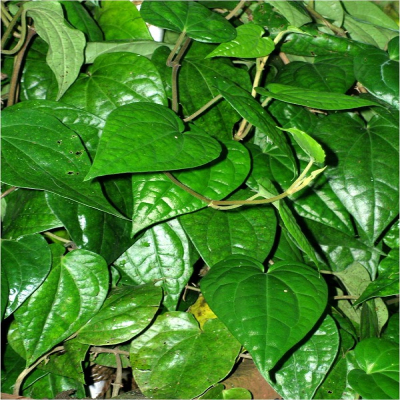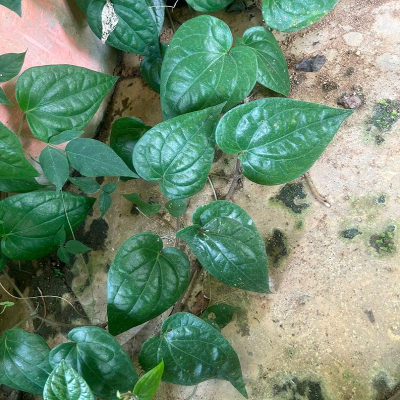Distribution and habitat: India and east part of Africa.
Botany: A perennial dioecious root climber, stems semi-woody, climbing by many short adventitious rootlets, very stout, much thickened at nodes, young parts glabrous.
- Leaves: Large, 15-20 cm, broadly ovate, slightly cordate and often a little unequal at base, shortly acuminate, acute, entire but margin often rather undulate, usually 7 nerved, glabrous, thick, bright green and shining on both sides, petiole 2-2.5 cm, stout.
- Flowers : Spikes dense, cylindrical, female 2.5-5 cm, pendulous, bracts triangular-rotundate, peltate, yellow, rachis pilose; stigmas 5 or 6, spreading stellately.
- Fruit: Sparingly produced, quite immersed in the fleshy spike which is about 5 cm long and pendulous.
Chemical constituent:
- Leaves- Vitamin A & C, thiamine, riboflavin, nicotinic acid, glucose, fructose, maltose, sucrose, malic acid, oxalic acid, amino acids, β-& γ-sitosterols, hentriacontane pentatriacontane, n-triacontanol, stearic acid, chavibetol acetate and allylpylrocatechol diacetate
- Essential oil- eugenol, carvacrol,chavicol, allylcatechol, cineole and p- cymene
- Roots- β-sitosterol, diosgenin, Vines- tocopherol, eugenol
Uses:
- Used in the treatment of night blindness, catarrh, diphtheria etc.
- Its leaf can be used against fever, eye infection, mouth ulcer, cough, skin irritation, wounds and swellings.
Propagation: By stem cuttings (approximately 40-50 cm long).


